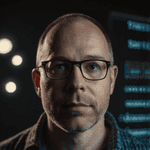Is OpenAI's New Image Generator the Future of Creativity

The Rise of AI in Image Generation
The landscape of creativity is rapidly evolving, and at the forefront of this transformation is OpenAI’s latest image generator. This powerful tool is not just another addition to the tech world; it’s a game-changer that has the potential to redefine how we think about art and creativity. But what does this mean for artists and creators?
In a world where technology is increasingly integrated into our daily lives, the question arises: can AI truly replicate human creativity? As we delve into the capabilities of OpenAI’s new image generator, we’ll explore its features, implications, and the ethical considerations surrounding its use.

What Makes OpenAI’s Image Generator Stand Out?
OpenAI’s image generator boasts several impressive features that set it apart from its predecessors. Here are some key aspects that make this tool a standout:
- High-Quality Outputs: The generator produces photorealistic images that are often indistinguishable from those created by human artists.
- User-Friendly Interface: Designed with accessibility in mind, the interface allows users of all skill levels to create stunning visuals effortlessly.
- Versatile Applications: From marketing materials to personal projects, the generator can be used in various fields, making it a valuable asset for professionals and hobbyists alike.
As we consider these features, one can’t help but wonder: will this technology replace traditional artists, or will it serve as a complementary tool that enhances creativity?
The Ethical Implications of AI Art
With great power comes great responsibility. As AI-generated art becomes more prevalent, ethical questions arise. Here are some critical considerations:
- Copyright Issues: Who owns the rights to an image created by an AI? This question is still being debated in legal circles.
- Authenticity: Can art created by machines be considered “real” art? This philosophical debate challenges our understanding of creativity.
- Job Displacement: As AI tools become more capable, will they threaten the livelihoods of artists and designers?
These concerns highlight the need for a balanced approach to integrating AI into creative fields. It’s essential to foster a dialogue about the role of technology in art and ensure that human creativity remains at the forefront.

The Future of Creativity: Collaboration or Competition?
As we look ahead, the future of creativity may not be a battle between humans and machines but rather a collaboration. Imagine a world where artists use AI tools to enhance their creative process. This partnership could lead to innovative works that blend human emotion with machine precision.
Consider the following possibilities:
- Enhanced Creativity: Artists can use AI to generate ideas or concepts, pushing the boundaries of their imagination.
- Efficiency: With AI handling repetitive tasks, artists can focus more on the creative aspects of their work.
- New Art Forms: The collaboration between humans and AI could give rise to entirely new genres of art that we can’t yet envision.
The question remains: how will artists adapt to this new landscape? Will they embrace AI as a tool, or will they resist it in favor of traditional methods?
Real-World Applications of AI Image Generation
The applications of OpenAI’s image generator are vast and varied. Here are some real-world examples of how this technology is being utilized:
- Marketing and Advertising: Companies are using AI-generated images to create eye-catching advertisements that stand out in a crowded market.
- Entertainment: Filmmakers and game developers are leveraging AI to create stunning visuals and concept art, streamlining their production processes.
- Education: Educators are incorporating AI tools into their curricula, teaching students about the intersection of technology and creativity.
These examples illustrate the transformative potential of AI in various industries. As more professionals adopt these technologies, the landscape of creative work will continue to evolve.

The Challenges Ahead
While the potential of AI in image generation is exciting, challenges remain. Here are some hurdles that need to be addressed:
- Quality Control: Ensuring that AI-generated images meet high standards of quality is crucial for professional use.
- Bias in AI: AI systems can inadvertently perpetuate biases present in their training data, leading to skewed representations in generated images.
- Public Perception: Educating the public about the capabilities and limitations of AI-generated art is essential for fostering acceptance.
As we navigate these challenges, it’s vital to engage in ongoing discussions about the role of AI in creativity and its impact on society.
Embracing the Future of AI Art
In conclusion, OpenAI’s new image generator represents a significant leap forward in the world of creativity. While it raises important ethical questions and challenges, it also offers exciting opportunities for collaboration and innovation. As we embrace this technology, we must remain vigilant about its implications and strive to create a future where human creativity and AI coexist harmoniously.
The future of creativity is here, and it’s time to explore the possibilities. Will you be a part of this exciting journey?
Recent articles that support this discussion include:
Share
Read on...
Table Of Contents
Legal Stuff

